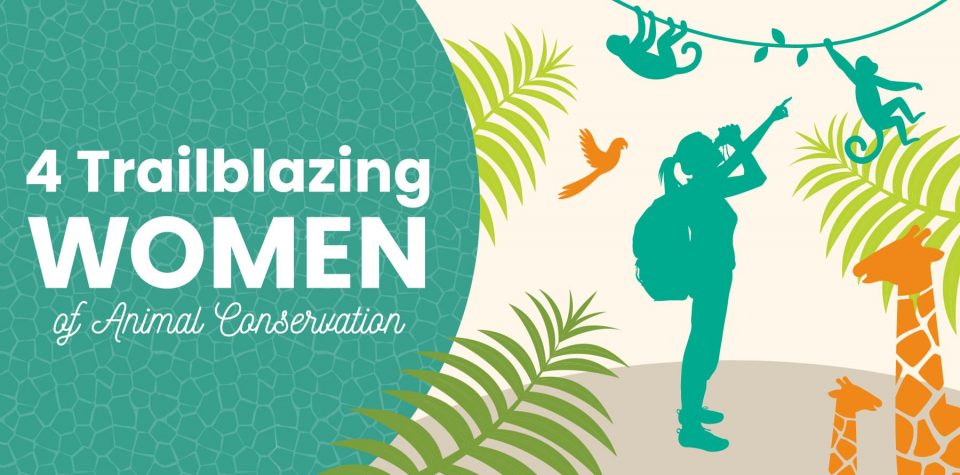
4 Trailblazing Women of Animal Conservation
Throughout the world, women are changing the way people think about and interact with animals. They’re making scientific strides, founding animal sanctuaries, advocating for animal welfare, and more. To mark International Women’s Day, we’re celebrating four trailblazing women whose knowledge, passion, and dedication have improved the lives of creatures great and small.
Jane Goodall
English conservationist Jane Goodall rocked the world in 1960 when she announced that, like humans, chimpanzees use tools and lead complex social lives. With no formal academic training, she had to fight for her work to be recognized, but her insights led many people to realize that the differences between humans and animals weren’t as great as originally thought.
In 1977, she founded the Jane Goodall Institute, which has protected over three million acres of habitat around the world for wildlife, including chimpanzees and other great apes. When Goodall began studying long-term primate behavior, she was one of only a few women in the field. But because of her groundbreaking work, women now lead the field worldwide.
Lek Chailert
2001 Ford Foundation “Hero of the Planet” Sangduen Lek Chailert hails from Thailand, where she has dedicated her life to protecting the country’s Asian elephants. Chailert was born in a small village in the hills, where she helped her grandfather, a traditional healer, work with animals. As a teenager, she became determined to improve elephants’ lives when she saw their mistreatment at a logging camp. After college, she began advocating for elephants and opened a 250-acre sanctuary for them. Chailert has been featured in several documentaries and has earned international recognition for her work with these majestic creatures, which are the national animal symbol of her homeland.
Anne Innis Dagg
At the age of three, Canadian biologist and zoologist Anne Innis Dagg saw her first giraffe at a zoo and a lifelong fascination began. In 1956, at the age of twenty-three, she traveled on her own to South Africa and became the first scientist to observe giraffes in the wild. Later, as she pursued an academic career, Innis Dagg struggled with policies that treated women unfairly. But she pushed on and eventually wrote several influential books on subjects related to zoology and became widely known as the founder of giraffe science.
Her 1976 book The Giraffe: Its Biology, Behavior, and Ecology remains essential reading for anyone studying the animals. She is a recipient of the Order of Canada, an award presented only to people who make extraordinary contributions to the country.
Katy Payne
If you’ve ever heard a humpback whale song, you might have American biologist Katy Payne to thank for it. Payne grew up on a farm and studied biology and music in college. But the inspiration for her signature work in acoustic biology—the science of studying animal sounds—was a result of simple observation. While on an expedition, she noticed that whale sounds repeated in specific phrases that, had they come from a human voice, would be called songs. She began describing them as music, identifying their themes and melodies, and tracked how individual whales changed their songs over time.
Later, when observing elephants at the Portland Zoo, Payne discovered that they, too, use elaborate vocal communication—but at frequencies the human ear cannot hear. The discovery has been helpful to scientists who monitor elephant populations. Because elephant sounds can carry for miles, scientists can use them to keep track of herds when they are hidden in places such as dense forests.
Together Time
Some of the women profiled in this piece discovered their love for animals when they were young. If your kids like animals, fuel their fascination with our free, printable step-by-step animal drawing tutorial or baby animal match-up activity. Then check out our animal facts for kids and introduce them to the wonders of the animal world.
